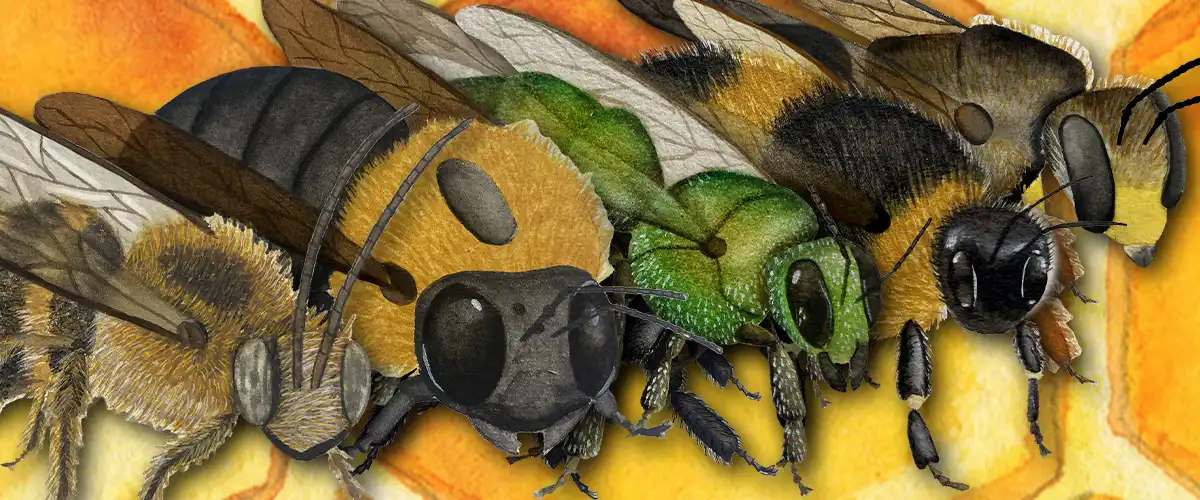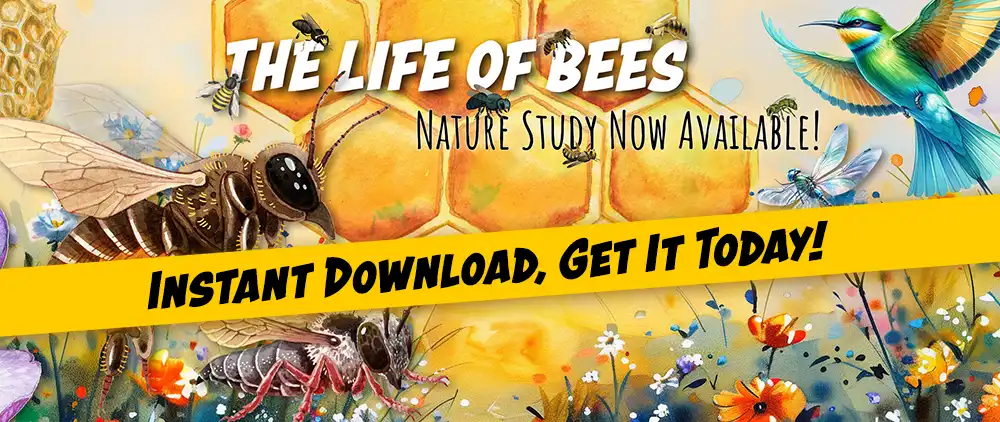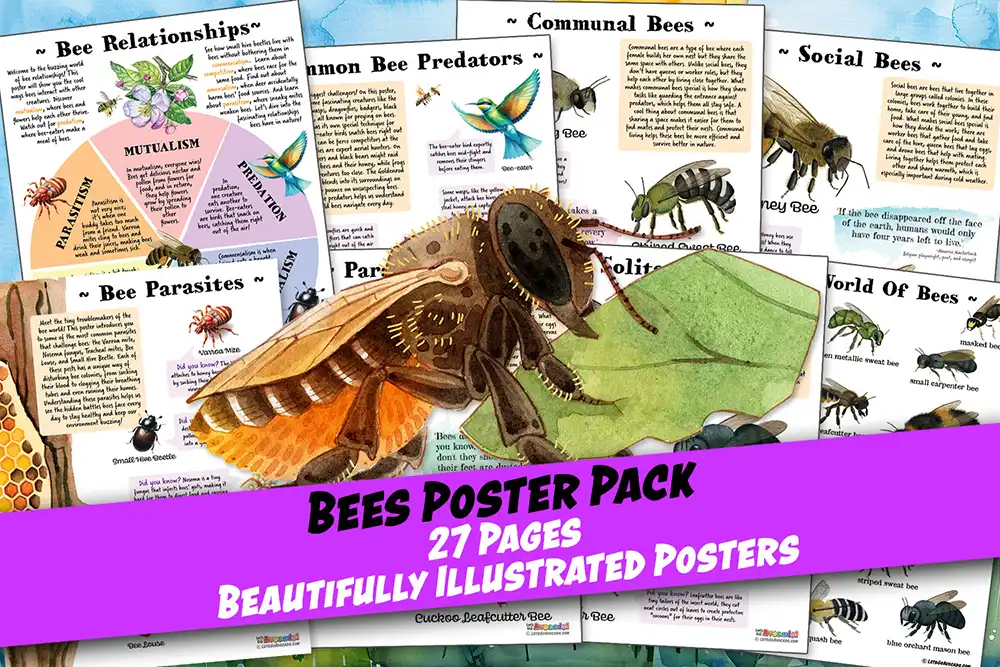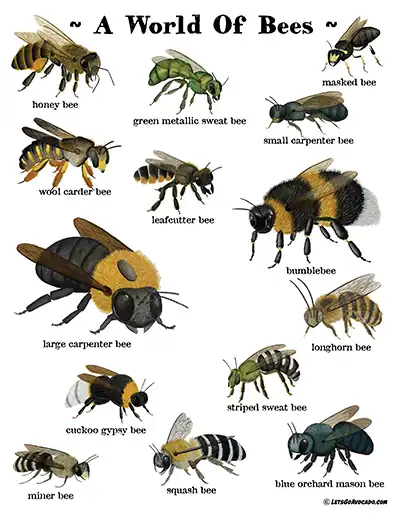This page may contain affiliate links.
Read our disclosure and privacy policy here.
When you think of bees, you probably picture honey bees or bumblebees, buzzing around and making honey, right? But did you know that there are lots of different bee species out there, and not all of them live in big colonies? North America is home to some really cool bee species, each with its own unique habits and traits. Let’s dive into the world of these fascinating creatures and discover 14 amazing types of bees, along with some cool facts about them!
Table of Contents
14 Amazing Bee Species in North America
FREE Bee Species Poster - Instant Download!
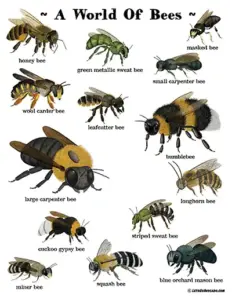
Interested in enhancing your classroom or homeschooling experience with a visually appealing and educational tool? Dive into our article about the fascinating world of North American bee species, where you’ll find intriguing facts about 14 different bees. At the end of the article, you can download a free, beautifully illustrated watercolor bee species poster. It’s a perfect resource for making learning engaging and vibrant. So, read through, discover the wonders of these essential pollinators, and then display your new poster to spark curiosity and learning in your educational space.
Poster download link is at the end of this article!
Honey Bee (Apis mellifera)
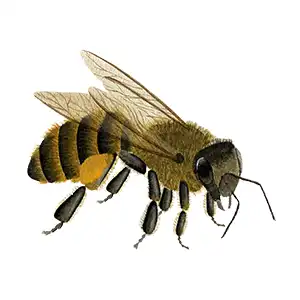
The honey bee is perhaps the most well-known bee and plays a vital role in agriculture as a pollinator for many plants. Originating from Europe, these bees have been introduced worldwide because of their ability to produce large quantities of honey and beeswax. Honey bees are social insects, living in large colonies with a single queen, many workers, and a few drones. Each colony can have tens of thousands of bees working together in a highly organized society. They communicate through dances and pheromones to tell each other where to find the best flowers!
Green Metallic Sweat Bee (Agapostemon spp.)
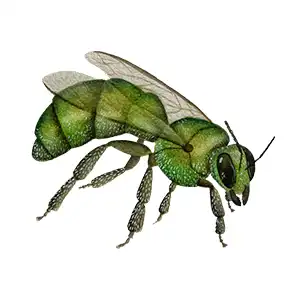
These stunning bees catch the eye with their shiny, metallic green bodies. Green metallic sweat bees are solitary, meaning each female bee lives and breeds independently. They are often found in gardens and fields where they play a crucial role in pollinating flowers. Unlike honey bees, they do not produce honey or wax, but they help plants grow by spreading pollen from flower to flower.
Masked Bee (Hylaeus spp.)
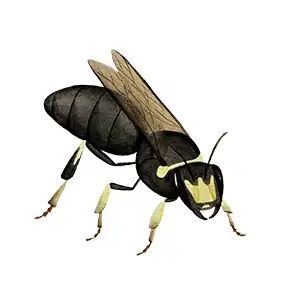
Masked bees are unique because they are among the few bees that don’t have hairy bodies. These small, black, or yellow-marked bees nest in tiny cavities in wood or stems, and instead of carrying pollen on their bodies, they ingest it and carry it back to their nests in their crops. They are solitary bees, and you can spot them darting around flowers in gardens and meadows across North America.
Small Carpenter Bee (Ceratina spp.)
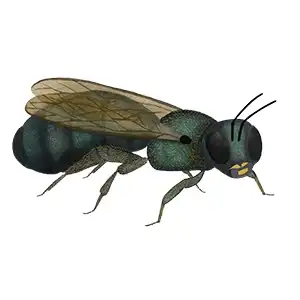
Small carpenter bees are solitary creatures that burrow into plant stems or dead wood to lay their eggs. Unlike their larger relatives, these bees are quite small and have a shiny, dark appearance. They are important pollinators, especially of open-faced flowers, and can be found in various habitats from forests to urban gardens.
Wool Carder Bee (Anthidium manicatum)
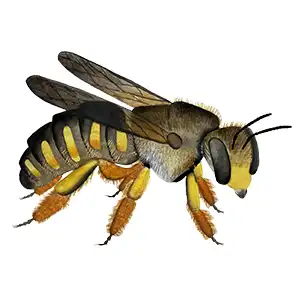
Wool carder bees get their name because the females collect plant fibers (wool) to build their nests. These solitary bees are robust and can be territorialThe behavior of animals when they defend a specific area they live in or use for resources. Beavers can be territorial, especially when protecting their lodge. about their feeding areas. They often chase away other bees and insects to keep all the resources to themselves. You can find them in gardens where they gather pollen and nectar and card plant fibers from leaves.
Leafcutter Bee (Megachile spp.)
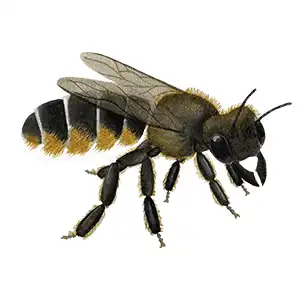
Leafcutter bees are solitary bees known for their habit of cutting circles out of leaves to construct their nests. These bees are excellent pollinators and are often used in commercial agriculture, especially for pollinating alfalfa. They carry pollen on their abdomens rather than their legs, which makes them look quite distinctive when flying back to their nests.
Bumblebee (Bombus spp.)
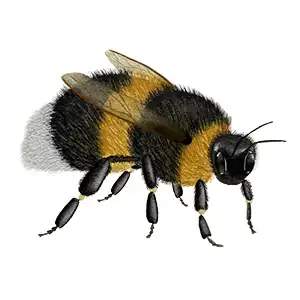
Bumblebees are large, fuzzy insects recognized by their bumbling flight patterns. These bees are social, but their colonies are much smaller than those of honey bees, usually containing only a few hundred bees. Bumblebees are especially good at pollinating crops that require buzz pollination, such as tomatoes and peppers, because they can vibrate their bodies to shake loose pollen.
Large Carpenter Bee (Xylocopa spp.)
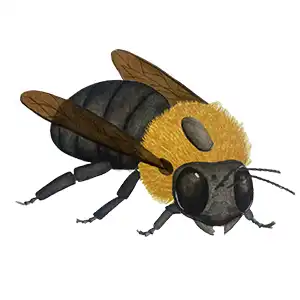
Large carpenter bees are solitary, though females may sometimes share a nest. They are known for their ability to drill into wood to lay their eggs. These bees are often considered pests because of the damage they can do to wooden structures, but they are important pollinators for many wildflowers and some crops.
Longhorn Bee (Melissodes spp.)
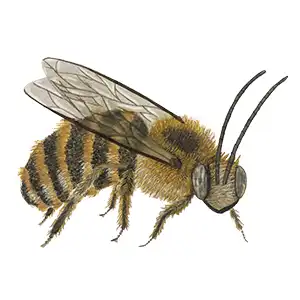
Named for their exceptionally long antennae, longhorn bees are solitary pollinators that are particularly fond of sunflowers. They are active in gardens and fields throughout the summer, where they gather pollen and nectar to stock their underground nests.
Striped Sweat Bee (Halictus spp.)
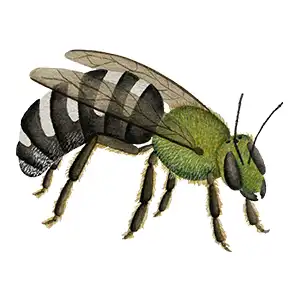
These bees are small and often have striped abdomens. Striped sweat bees can be solitary or social, depending on their species and environmental conditions. They are attracted to sweat, which is where they get their name, and are also important pollinators for many plants.
Cuckoo Gypsy Bumblebee (Psithyrus spp.)
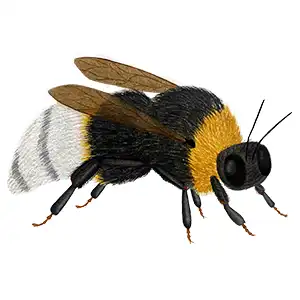
Cuckoo bumblebees are brood parasites, meaning they don’t make their own nests but invade the nests of other bumblebees to lay their eggs. The host bumblebee workers then raise the cuckoo bee’s offspring unwittingly. These bees play a complex role in the ecosystemAn ecosystem is a community of living organisms, like insects and birds, and non-living components, like water and rocks, that interact with each other in a specific area. Learn More and can be found wherever bumblebees are nesting.
Miner Bee (Andrena spp.)
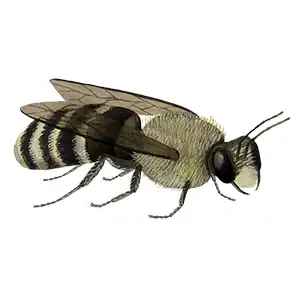
Miner bees, also known as mining bees, are solitary bees that make their homes underground. They dig tunnels in the ground where they create individual chambers for their eggs. These bees are quite gentle and unlikely to sting. Miner bees are very important for the pollination of early spring flowers. They are widespread across North America and can be found in gardens and fields.
Squash Bee (Peponapis pruinosa)
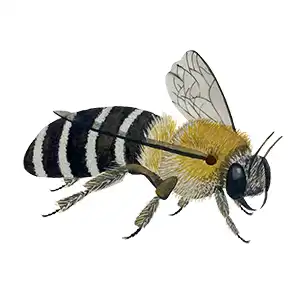
Squash bees are specialized pollinators of squash, pumpkin, and other gourd plants. These solitary bees are active early in the morning and are perfectly adapted to pollinate these crops. They often nest right in the fields where these plants grow, making them a farmer’s friend for boosting crop yields. Look for them in agricultural areas where squash and pumpkins are common.
Blue Orchard Mason Bee (Osmia lignaria)
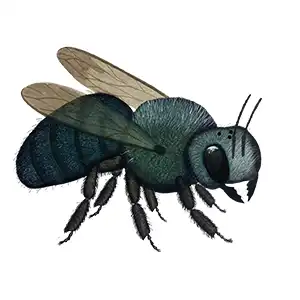
The blue orchard mason bee is a solitary bee that is an excellent pollinator for spring blossoms, especially fruit trees like apple, cherry, and almond. Unlike honey bees, they carry pollen on the underside of their abdomen. They nest in pre-made holes in wood or in commercial bee houses, making them popular among gardeners and fruit growers for their efficiency in pollination.
Cool bee species watercolor poster showing 14 fascinating bee species from North America.

There’s a lot to explore right where we are, in our own neighborhoods and backyards! Join us while we get off the couch and explore the everyday wonders of nature, science, space, engineering, art, and anything else we stumble upon during on our adventures.


